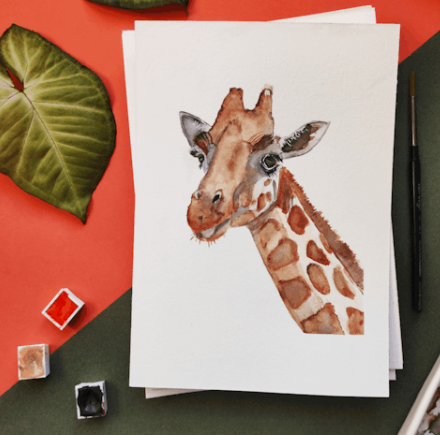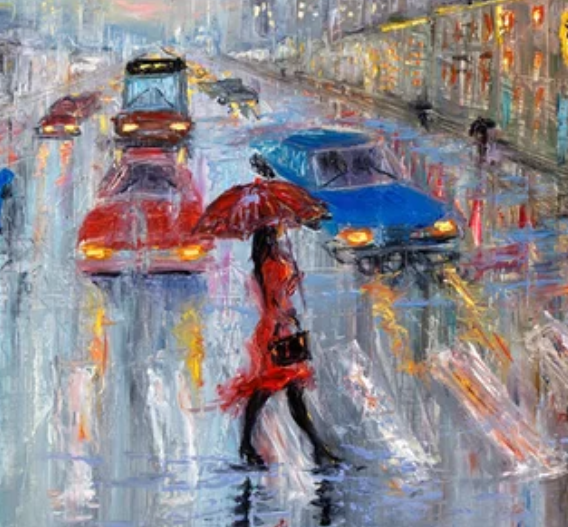DET Sprechen Sie über das Foto 3 - Vorlage und Strategien zur Beantwortung von Fragen zum Kunsttyp
In der Serie "Über das Foto sprechen - Vorlage" haben wir bereits Vorlagen für zwei Themen besprochen:Porträts von Menschen undTransport. Dieser Blogbeitrag konzentriert sich auf Vorlagen und Strategien zur Beantwortung von Kunstfragen.
| Speak About the Photo | Porträts von Menschen |
| Transport | |
| Kunst | |
| Straßenszenen und Architektur | |
| Natürliche Landschaften | |
| Veranstaltungen und Versammlungen | |
| Flora und Fauna | |
| Essen | |
| Innenobjekte |
Strategien für AnsweringEinrtTypeQuestionen: Fünf-SSchrittMethod
Kombinieren von Vokabular, sensorischer Sprache und Vergleichen ist eine effektive Methode zur Beschreibung von Gemälden oder Kunstwerken. Wir können es in fünf Schritte unterteilen.Lassen Sie uns das folgende Bild als Beispiel analysieren:

1.Beschreiben Sie das Thema: Erklären Sie kurz, was das Gemälde oder Kunstwerk darstellt. Ist es ein Porträt, eine Landschaft, ein Stillleben oder abstrakt? Welche Objekte, Figuren oder Szenen sind zu sehen?
Beispiel: This painting illustrates the artistic process, prominently displaying the head of a giraffe.
2.Verwenden Sie Sinnesprache: Integrieren Sie Adjektive, die die Sinne ansprechen, mit Fokus auf Farbe, Textur, Form und Größe.
Beispiel: The background transitions from vibrant orange at the top to a deep green below, creating a warm and inviting atmosphere.
3.Nennen Sie die Atmosphäre: Erklären Sie die Gesamtstimmung und den Kontext des Stücks. Ist es ruhig, energisch, mysteriös oder freudig? Wie trägt der Einsatz von Farbe, Komposition und Licht durch den Künstler zu diesem Gefühl bei?
Beispiel: The warm gradient of colors fosters a cozy, inviting ambiance, allowing viewers to feel a connection to nature.
4.Vergleiche anstellen: Falls relevant, vergleichen Sie das Kunstwerk mit anderen Werken desselben Künstlers oder innerhalb desselben Genres.
Example: This piece appears to be part of a series, as suggested by the two stacked sheets of paper at the bottom, reminiscent of other works exploring animal forms.
5.Teilen Sie persönliche Gefühle oder Reaktionen: Übermitteln Sie Ihre persönliche Reaktion auf das Kunstwerk und beschreiben Sie, wie es Ihnen dabei geht. Welche Erinnerungen oder Assoziationen werden dadurch hervorgerufen?
Beispiel: The presence of a black pen next to the vibrant paintings brings back memories of my childhood art projects, where creativity flowed from simple tools. Overall, this painting not only presents a simple sketch of a giraffe but also captures the essence of the artistic process and incorporates elements from the surrounding environment, such as paints, paper, and natural leaves, inviting viewers to imagine the scene of artistic creation.
Beispiel Antwort:
This painting illustrates the artistic process, prominently displaying the head of a giraffe. The background transitions from vibrant orange at the top to a deep green below, creating a warm and inviting atmosphere. This warm gradient fosters a cozy ambience, allowing viewers to feel a connection to nature.
The piece appears to be part of a series, as suggested by the two stacked sheets of paper at the bottom, reminiscent of other works exploring animal forms. Personally, the presence of a black pen next to the vibrant paintings evokes memories of my childhood art projects, where creativity flowed from simple tools. Overall, this artwork not only presents a striking sketch of a giraffe but also captures the essence of the artistic process, incorporating elements from the surrounding environment—paints, paper, and natural leaves—inviting viewers to imagine the scene of artistic creation.
DerAantwortTVorlage fürArtQuestionen
Besondere Hinweise: In den Beispielsätzen gibt es zwei Textfarben. Schwarz steht für feste Phrasen, während Blau für flexible Phrasen steht.
1. The picture showcases a [adjective] [art style or period] artwork, with [element 1] and [element 2], creating a [adjective] visual impact on the viewer.
2.The [artwork or painting] in the photo is set against a [adjective] [background or setting], with [feature or effect 1] and [feature or effect 2], creating a [adjective] atmosphere.
3.The [artwork or painting] in the photo features a [adjective] use of [technique or medium], including [technique or medium 1] and [technique or medium 2], which [effect on the overall appearance].

Beispielantwort: This oil painting showcases a vibrant color palette, prominently featuring the reflection of a woman in a red coat and umbrella on the wet pavement, which creates a captivating visual impact on the viewer. At the center of the scene, a woman is crossing the street, her image clearly visible on the slick ground, suggesting that it may have rained recently. The headlights of several cars and a bus on the street add depth, infusing the scene with a sense of dynamism and energy. The busy street is alive with movement, as pedestrians navigate their way through the bustling atmosphere. In the background, the silhouettes of buildings and blurred figures enhance the sense of mystery. This interplay of light and shadow, along with the reflections on the wet surface, creates a striking contrast that draws the viewer in. Ultimately, this artwork, rich in color and strong in contrast, offers a lively and vibrant depiction of urban life, inviting viewers to immerse themselves in the scene.
Weiterführende Literatur:
DET 5 Hochbewertete Beispielantworten: 'Sprechen Sie über das Foto' (2024.09.24)






